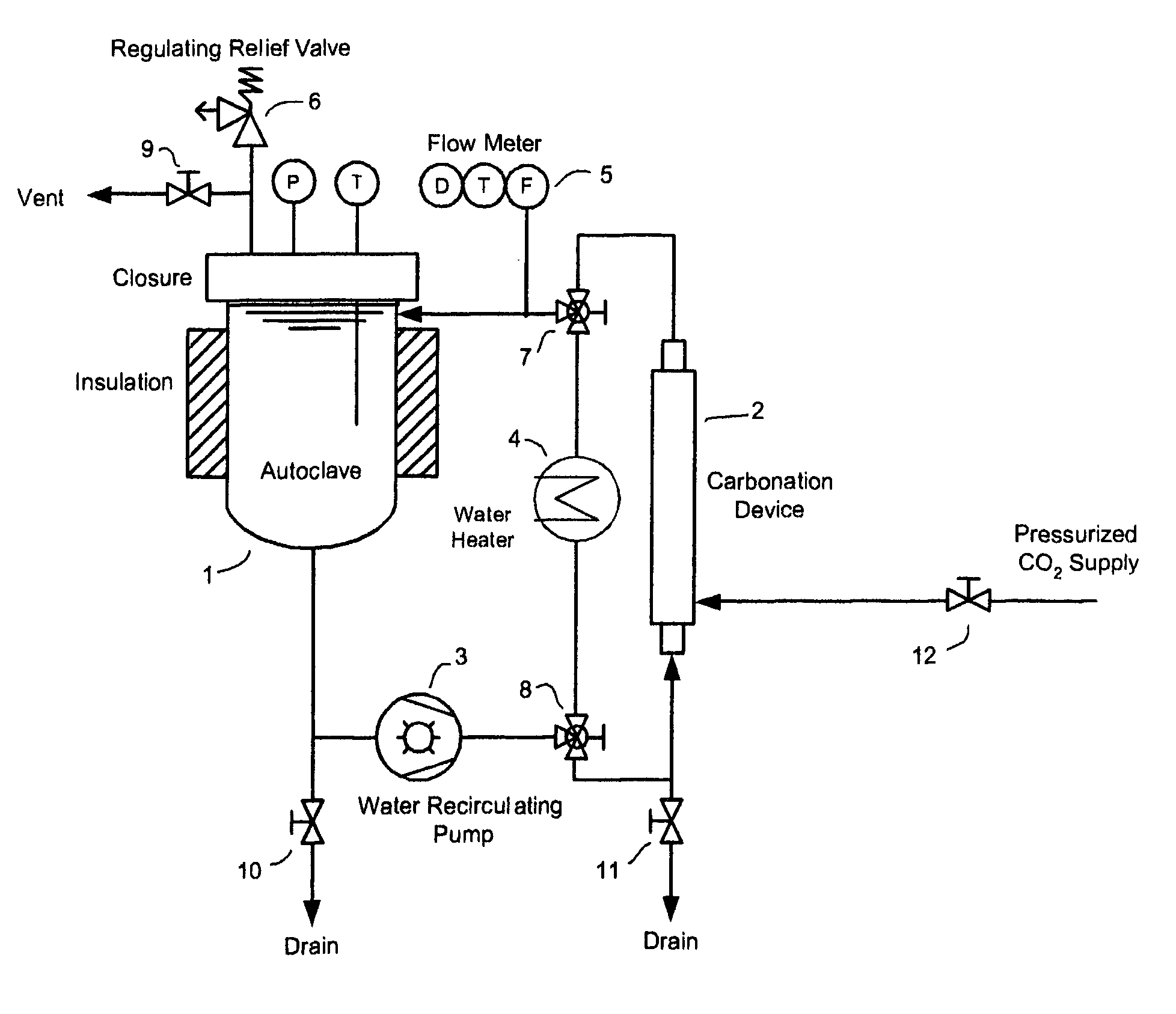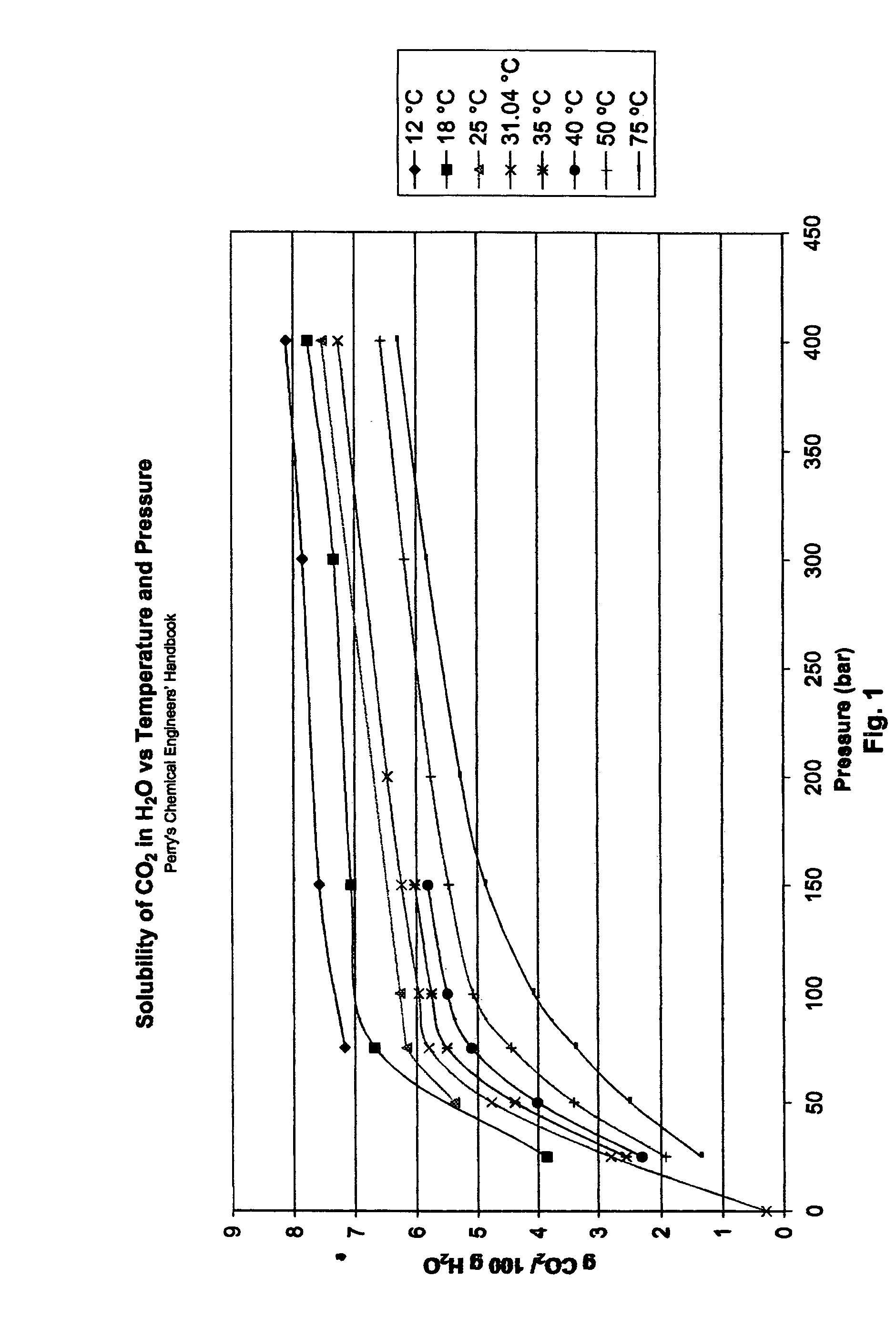Method for sterilizing articles using carbonated water
a technology of carbonated water and articles, which is applied in the direction of disinfection, water installations, and infections, can solve the problems of not being able to sterilize heat-sensitive articles, chemical residues must be thoroughly rinsed from articles, and producing and aseptically storing the required sterile water is a separate and expensive task
- Summary
- Abstract
- Description
- Claims
- Application Information
AI Technical Summary
Benefits of technology
Problems solved by technology
Method used
Image
Examples
example
[0053] Porous sintered 316 stainless steel circular discs with nominal pore size of 10 micrometers were used as test articles. The discs were 2.68 cm diameter×1.65 mm thick. In addition, disc “sandwiches” were prepared by sticking two of the discs together after applying a circular bead of hot melt polyolefin glue around the periphery of a disc near its outer edge. While the glue was still melted, two discs were pressed together leaving a cavity between the two. A “sandwich” was clamped with small office supply bulldog clips to prevent the discs from separating.
[0054] Two of the single discs and two “sandwiches” were inoculated with B. subtilis spores. An inoculated pair of articles consisting of one disc and one “sandwich were treated by the method, and the other inoculated pair were used as controls.
[0055]B. subtilis microorganism (ATCC 6633) was purchased from Cryocults of Newbury Park, Calif. Cultures were grown in standard HBI broth for 36 hours at 36° C. The broth was then c...
PUM
| Property | Measurement | Unit |
|---|---|---|
| temperature | aaaaa | aaaaa |
| pressure | aaaaa | aaaaa |
| temperature | aaaaa | aaaaa |
Abstract
Description
Claims
Application Information
 Login to View More
Login to View More - R&D
- Intellectual Property
- Life Sciences
- Materials
- Tech Scout
- Unparalleled Data Quality
- Higher Quality Content
- 60% Fewer Hallucinations
Browse by: Latest US Patents, China's latest patents, Technical Efficacy Thesaurus, Application Domain, Technology Topic, Popular Technical Reports.
© 2025 PatSnap. All rights reserved.Legal|Privacy policy|Modern Slavery Act Transparency Statement|Sitemap|About US| Contact US: help@patsnap.com



